Gwent: Deck Building for Beginners - The Best Tips
In this Gwent guide you will learn:
- How to optimize your Gwent deck quickly and easily
- Which card constellations work best
- What the best deckbuilding tips are for each faction
The strategic card gameGwent: The Witcher Card Game was released on October 23, 2019 for PC, Playstation 4 and Xbox One. If you're already an experienced Gwent player looking for pro deckbuilding tips, check out our Gwent deck guide for pros. Also, it can't hurt to know the best tips and tricks for Gwent.
In this guide, we'll give you the best deck-building tips and explain what you need to keep in mind when putting together your battle deck.
The best approach to deck-building
Basically, you have two ways to plan your Gwent deck. Both are legitimate, and which works better for you is a matter of personal preference.
- "Top Down": By starting from an ability of one or more important gold cards and planning the rest of the deck.
- " Bottom up": By first matching the bronze cards and then adding gold and special cards.
Of course, if you plan around individual gold cards, there's a risk that you'll be unlucky when you draw the cards and the gold card will remain in the deck. Then you'll have to deal with the remaining bronze and silver cards in Gwent. When planning "from the top", choose several gold cards with which your strategy works and take your time with strategic deck planning.
For example,your leader's special ability can be an important clue. Look at it carefully and consider which one fits into your strategy. Choosing your leader wisely and matching your bronze and gold cards to him can give you strategic advantages and turn the entire game in your favor.
Forexample, the Crab Spider Queen in the Monster Deck has the ability to spawn a Crab Spider every time a friendly unit consumes an ally. For an advantage, bet on cards that consume allies. This gives you a double advantage: the consuming card increases in strength by that of the consumed, while at the same time you gain support from additional crab spiders.
Gwent: Using synergy effects when building decks
The example of the Crab Spider Queen brings us to an important basic concept that every deck should follow: synergy effects. It is extremely dangerous to rely solely on the strength of a few cards. Because at the latest, when these are wiped away by an opponent's move, you're looking down the tube.
Your playing field looks like this or something similar.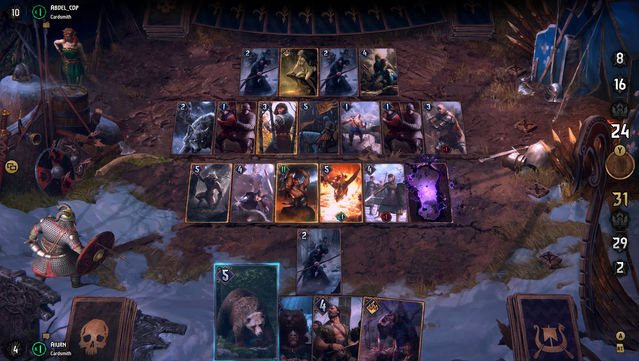
Instead of brute strength, Gwent calls for strategy and tactics. This means that you have to deal with the abilities and interactions of your cards. Therefore, the most important characteristic of your deck (besides the strength of individual cards) is that all units are optimally coordinated and serve a larger tactic.
For example, some cards block the opponent's - others give bonus damage per blocked opponent. You must take advantage of such interplay. Therefore, take a close look at whether your units have abilities that support each other in battle.
Don't forget to take neutral cards into account when building your deck . They can be combined with all factions and are invaluable. Last but not least, Geralt of Riva is a neutral card in Gwent. The Witcher - who you'll play in The Witcher 3: Wild Hunt - takes down enemies with at least eight strength in one fell swoop.
Multiple deck-building strategies are better than one
As with most strategic collectible card games (starting with Magic: The Gathering), in the Witcher card game Gwent, always expect that your strategywon't work. For example, because the opponent sees through you and foils your plans. In these cases it is important that you have more than one strategy at hand.
This is not always easy, since many Gwent players tend to focus on the obvious advantages of a faction first. Clever players do it differently, expanding and combining such strategies. When using the Nilfgaard deck, rely on the combination of Espionage and Reveal cards. In addition, block cards are also useful to damage your opponent - provided that it fits into your deck-building strategy.
Nilfgaard Faction: The Best Deckbuilding Tips #1
The Nilfgaard faction is the biggest enemy of the Northern Kingdoms and relies especially on sneaky maneuvers. This faction's greatest strength is using spies andnasty tricks like alchemy or cow carcasses. If you spike the troops with spies to match your leader, sneaky victories are guaranteed.
Nilfgaard surprises opponents with sneaky moves and buffs.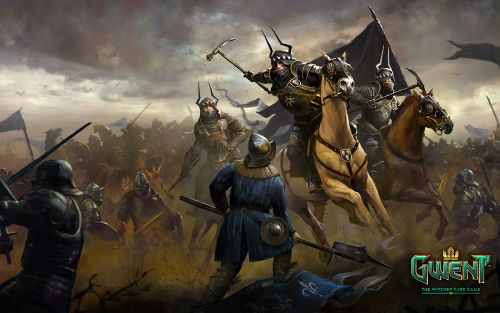
Within the Nilfgaard deck, you have several general strategies at your disposal. Among them is the espionage strategy, which relies on the use of cards with espionage abilities. This is because the Nilfgaard library contains a lot of such cards, which you place on the opponent's side of the field. Be sure to take the Impera Enforcer card, which gets a new charge for every spy you play.
You should also always have a few tactic cards in your deck. The cards Menno Coehoorn and Stefan Skelle are especially effective if you want to tactic properly in Gwent. Also, the artifact Corpse Poison is a good companion for your tactic cards. This is because it gets a new charge per tactic card played and can unleash deadly power on command.
The blockade strategy is particularly devious. Your goal is to thwart your opponent's plan by blocking his key cards. It gets really exciting when you use the right synergy effects. For example, you block enemy cards with Alba Armored Ride and your Slave Driver gets a damage bonus.
Be sure to include Vattier de Rideaux and Vanhemar in your Gwent deck to grab and destroy blocked units. You should also include the sorcerers Serrit and Auckes. Auckes not only blocks your opponent's copies, but also improves Serrit.
Nilfgaard Faction: The Best Deckbuilding Tips #2
Another specialty of Nilfgaard are Reveal cards, which you need for the Reveal strategy. These are versatile, inflicting damage, summoning copies or improve your units. They also have the nice side effect of letting you see your opponent's cards.
Be sure to take the Viper Sorcerer, which reveals the top card of your opponent's deck and banishes it immediately. Xarthisius and Mangonel are also part of the reveal strategy. The latter deals damage to an enemy unit when you reveal a card.
It gets really nasty when you rely on cards that use the opponent's strength to your advantage. This is a great way to build strategies that rely on grabbing. That is, to pull the opponent's card to your side of the field. To do this, you should have the Slave Hunter and Nilfgaard Knight in your deck, among others.
Independently of that, you strengthen your deck with Alchemy and Sorcery cards. This includes the Ointment, which gives you the ability to use Bronze cards one more time. Also pay attention to the mages and witches/witchers of the Nilfgaard faction. Their skills do a surprising amount of damage to enemies - for example, by hitting them with their own deployment ability.
For example, the card Fringilla Vigo copies a special card from your opponent's deck and plays it on your side. However, this can backfire and is not a strong deck-building move, as you are leaving a valuable slot to chance. Instead, develop a deck in which each card serves an overarching strategy.
The Best Nilfgaard Leader for Your Gwent Strategy
For your Gwent deck, choose from the following Nilfgaard leaders:
- Emhyr var Emreis: On his command, move an allied unit or artifact to your hand, then play a card. Deceive and strike again later is the name of the game here.
- Jan Calveit: Look at the top three cards of your deck and play one of them. This is valuable not only because the leader ensures the play of an additional card. In addition, you will know what cards you will draw next turn.
- Moruran Voorhis: Reveals a random card from your opponent's deck and improves an allied unit by 2.
- Usurper: Disables the enemy leader's abilities at the beginning of the battle. With strong enemy leaders, you can sometimes destroy the opponent's entire strategy this way.
If you rely on blocking your opponent, you will do well with Usurper. Decks that use a reveal strategy benefit from Jan Calveit and Moruran Voorhis. Use the individual strengths of the leaders in your strategy.
Northern Kingdoms Faction: Best Deckbuilding Tips #1
The Northern Kingdoms are soldiers through and through: Ambush, cunning, and alchemy are only used in moderation here. Instead, strength, siege tactics and zeal count. Even heavy war machinery is part of the game.
Zeal affects all cards with Command abilities and is valuable if you want to strike (i.e., execute a command) immediately after playing a card. These cards make for fast, hard fighting - if you combine them with Strength. In addition, leaders like King Foltest and King Henselt give your units zeal.
TheJohan Natalis card gives Zeal to all allies on the battlefield as long as he is there. Therefore, it should not be missing in your Northern Kingdoms deck. The same goes for the Temeria Drummer. Furthermore, there are cards of the Northern Kingdoms faction that strengthen your units with additional boost effects.
The Tridam Infantryman deals 1 damage each time it is upgraded, the Lyrian Landsknecht even 3 (without upgrading only 1). Even supposedly simple cards like the Lyrian Cavalry should not be missing in such a deck. They improve each unit with command abilities by 1 when played.
Be sure to take the artifact Vandergrifts Blade . This is because whenever you play a soldier card in the same row as the artifact, it is automatically improved by 2. In contrast to the Zeal strategy outlined above, the Siege strategy relies on on accumulating charges. Through a clever combo, you'll collect charges over several rounds, which you can use for a devastating attack when needed. The Siege Helper assists you in this by adding another charge to a machine when you play it.
Northern Kingdoms Faction: Best Deckbuilding Tips #2
Lyrical Abaleste gets one charge for each Command skill card played. Corvo's Uysogota unit even gets it for every card played. Reynard Odo gives an additional charge to each allied unit with charge - as do Knight's Spur andSoldier Odrin. Also, bring in the Bloody Baron, he can double an ally's charge.
An artifact that positively supports this strategy is the Bloody Flail. Add in the War MachineFoltest'sPride, and your opponent is guaranteed to get dizzy in Gwent. Some cards (like Roche: Gandenless) get one charge added per turn. Other units (like the cursed sorcerer Kiyan) deal damage equal to their charges.
If you're looking to overrun your opponent with pure mass, go with the army strategy. If you have a strategy of numerical superiority, be sure to use the Kaedwen Resurrector (and reinforce it beforehand). This is because it summons a copy of itself every time you destroy an enemy.
With a Draug, you can generate additional Kaedwen Resurrectors from allied humans. Stripe Command is a card that summons all copies of this unit from the deck. Include several in the deck, but only put one in your hand at the start of the game.
The Reinforcement tactic card expands on this strategy, as it generates copy allyunits and summons them. Numerical superiority can be combined with Strength and Zeal as well as Siege. In addition, Vernon Roche, Soldier is one of the useful single cards you can use to further support the strategy. This is because he acts as a spy in Gwent and lets you play two additional cards from the deck.
You can also use capture - actually a specialty of Nilfgaard's, just like espionage - selectively and get enemies on your side. There are also various magic cards to harm your enemy. Remember that you can also take neutral cards with you to round out your Northern Kingdoms strategy.
The best Northern Kingdoms leader for your Gwent strategy
The following Northern Kingdoms leaders can be taken into battle to suit your strategy.
- King Foltest improves an allied unit by 1 and gives it zeal - suitable for fast and strong surprise attacks.
- King Henselt relies on numerical superiority and strength at the same time. Following his orders, you play a copy of an allied unit on the battlefield, improve it by 4 and give it zeal as well.
- Princess Adda relies on brute force and deals 8 damage to a unit.
- King Demawend III gives 1 charge to a unit and has a cooldown of 2.
Skellige Faction: Best Deckbuilding Tips #1
The Skellige faction has powerful cards that are not easy to play. You'll also need a fair amount of courage. After all, it's a matter of sacrificing your own units or taking serious injuries.
The Skellige faction consists of extremely brave warriors.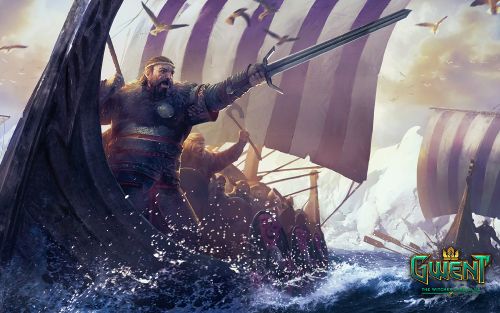
A special feature of the Skellige deck is the ability of some units to sacrifice themselves or other units. Once they are in the graveyard, you can summon them back to the battlefield with rituals. There are also cards with the Discard ability that are intentionally moved to the graveyard.
These include the Tuirseach Marauder or the Beast Morkuarg. Put together a combination that creates synergy: Derran shifts three cards from the deck to the graveyard, while Gudmund Flintongue swaps the entire deck with the graveyard pile. Cerys an Craite is recalled from the graveyard along with other cards, such as Sigrdriga's Ritual plays out.
If you are not afraid of losing your cards, you can go far with this strategy. Complemented by the leader Eist Tuirseach, it will cause surprises to your opponent. Alternatively, you can use the healing strategy
Skellige Faction: The Best Deckbuilding Tips #2
Because it doesn't always have to be a fatality: The Skellige units are not afraid to inflict injuries, if they damage the opponent properly with it. Such a strategy allows various healers and spellcasters to heal the damage suffered by your units. Therefore, no one has to be afraid of being wounded!
For example, the beast Olaf improves his attack by twice the damage taken. Harald Dog's Snout, while giving 1 damage to an allied unit, summons three friends. Pirates and their ships, such as the Dimun Smuggler and the Dimun Longship, also damage allied units.
None of this is a problem if you have enough healing units on deck. For this strategy, take the mage Joana, the Heymaey Herbalist, Heymaey Flaminica, and the Restore spell. The number behind the Bloodthirst attribute determines how many damaged units are needed to activate the attribute. Once enough enemies are damaged, the damage dealt by units with Bloodthirst increases to a sometimes lethal level.
Cards with Bloodthirst include Rush of the Master, Donar to Hindar, and Svanrige Tuirseach. There are also a few other cards that you can use for brute force and destruction. Use leaders and bronze units that damage enemies and combine them with those that benefit from damaged units.
Skjall damages a previously undamaged enemy unit. The ship Boar of the Sea inflicts another 2 damage to damaged units, Lugos the Mad damages a unit even equal to twice the number of already damaged enemy units. Vjaborn in turn destroys enemy units. Add Dagur Double Blade to the mix, as he is upgraded every time an enemy unit takes damage.
The best Skellige leader for your Gwent strategy
These leaders will help you perfect your Skellige strategy:
- Bran Tuirseach lets you discard a card and draw a new one in its place, with this ability renewing every turn. Discarding a card deals 1 damage to a randomly chosen enemy card.
- Crach an Craite likes it simple and deals 1 damage to a unit, with a cooldown of 2 - so you can add him a maximum of twice in a match.
A warrior in the card game Gwent.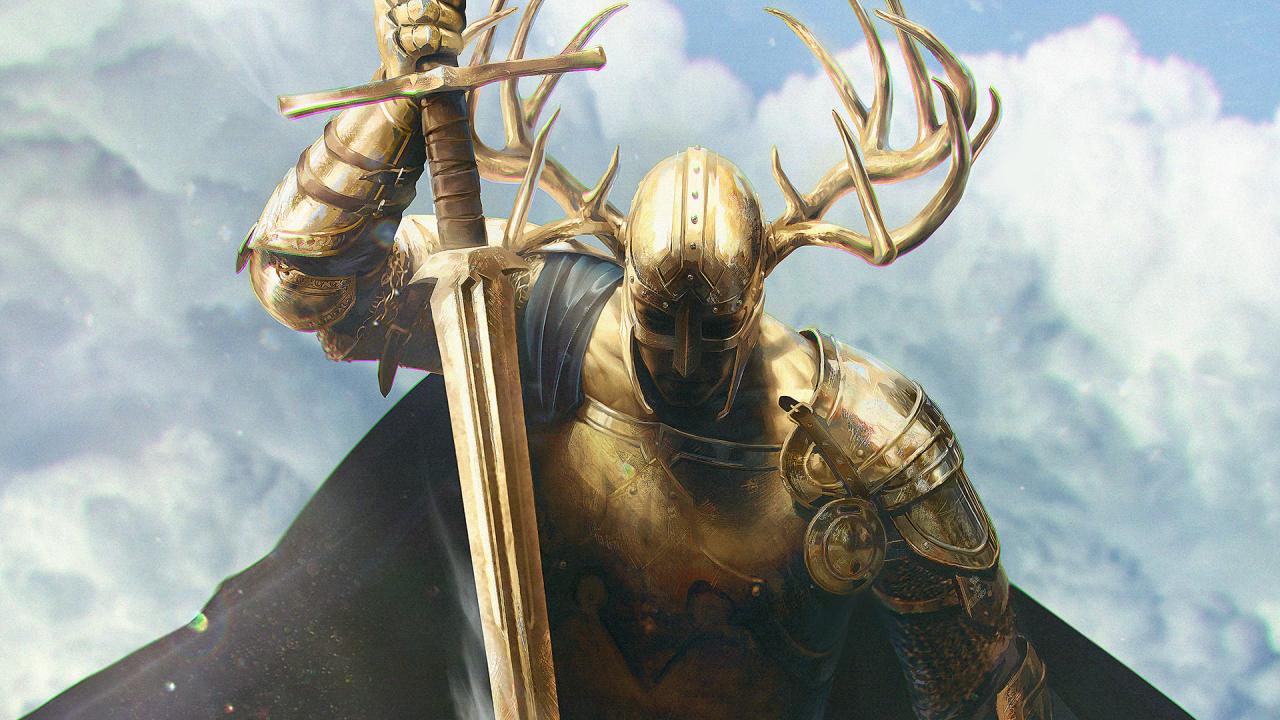
- Harald the Cripple rules with brute force, dealing 8 damage randomly distributed among enemy units. Use him if you are going for the damage and destruction strategy.
- Eist Tuirseach lets you play a warrior from the graveyard, perfectly complementing the revive strategy.
Scoia'tael Faction: Best Deckbuilding Tips #1
The Scoia'tael faction is made up of elves, dwarves, humans, and dyrads. It is mysterious and its moves are unpredictable. They work with traps and raids (cards played face-down) and appear in a swarm to surprise their opponents and damage them with improved troops. The faction also has the ability to make units immune.
The Scoia''tael are masters of trapping
Probably the greatest strength of Scoia'tael is that they are able to set traps for their opponents. If you rely on this strategy, you can unexpectedly damage or block your opponent. Include at least four Traps in your starting deck and supplement them with the tactic card Iorweth's Move, which lets you play two Traps at the same time.
Traps like the Snake Trap and the Pit of Traps destroy the next enemy unit played before it can use its ability. Also, take the Elf Scout with you for this strategy, as it is improved by 2 each time a trap is triggered.
Traps have a status effect called Raid, which means they are played face down and the enemy doesn't know what's behind them. This brings us to a strategy that you can use not only to complement the trap strategy, but also to massively strengthen other decks: the strategy around improving and adding damage. The Scoia'tael deck is teeming with units and cards that can improve other units and themselves.
Some cards have real boost effects like this. Xavier Moran, for example, is boosted by 2 for each improvement. Also take Barnabas Beckenbauer, Dennis Craemer, Ithlinne Aegli, Aglais, Milva or Call of the Forest and improve your units until your opponent trembles before your superiority.
Scoia'tael Faction: Best Deckbuilding Tips #2
Improvement goes hand in hand with damage to enemy units. Restock your ranks with Elves, Dyrads, Dwarves, and Humans that deal damage to opponents. An ideal complement to this is Ele'yas, who has an enhancing effect: He inflicts 1 more damage to already damaged units and also improves already improved units by 1. You see: here you can create valuable synergy effects between cards!
A Scoia''Tael fighter equipped with two daggers.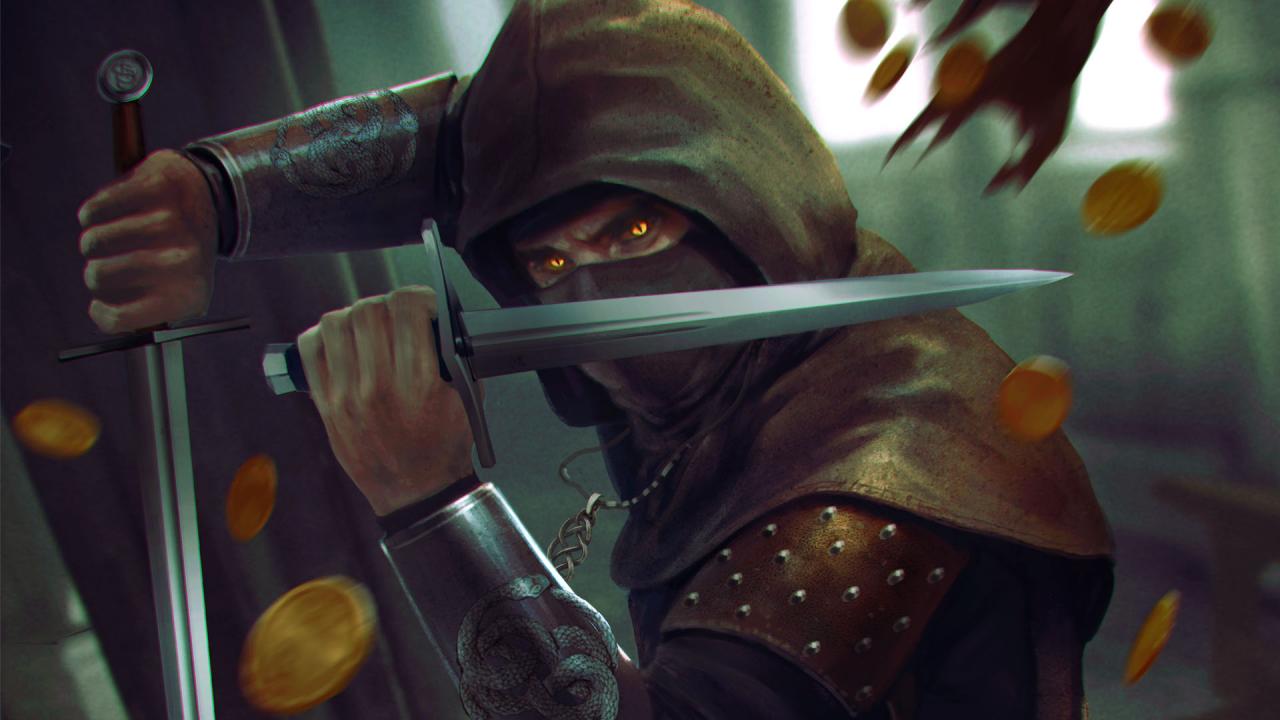
The swarm strategy relies on numerical superiority and can also be combined excellently with the improvement strategy. The more elves, dwarves, or dyrads you have on the battlefield, the more they boost each other if you tactic correctly.
Braenn, for example, gives other Dyrads Zeal if you control at least two other Dyrads. An Elf Swarm card is Aelirenn, which is summoned from the deck when you control five Elves. An ideal combo for this is Scoia'tael Rookie, as it summons simple copies of itself.
If you're going for Dwarves, there's no way around Zoltan Chivay: he destroys an enemy unit whose Strength is equal to or less than the number of allied Dwarves. Important: Decide on a race and don't mix too much, because the swarm strategy always relies on elves OR dwarves OR dyrades.
Immunity is a status effect with the effect that this card cannot be targeted by hand. This does not make the card indestructible, but most attacks bounce off it. Immune cards can become very powerful, especially if they are also buffed. Some cards in the Scoia'tael deck have this ability, which makes you more resistant to attacks.
In addition, there are cards like Gabor Zigrin or Mahakam Brigant that have toughness. Use them in the first or second turn, because they remain on the battlefield after the turn!
The Best Scoia'tael Leader for Your Gwent Strategy
These leaders will lead your Scoia'tael army into battle:
- Francesca Findabair: At her command, you can play a special card from your graveyard.
- Eithné deals 1 damage to a unit while having a full 4 charges. Take it with you if you want to weaken your opponent specifically.
The leaders of the Scoiatael faction.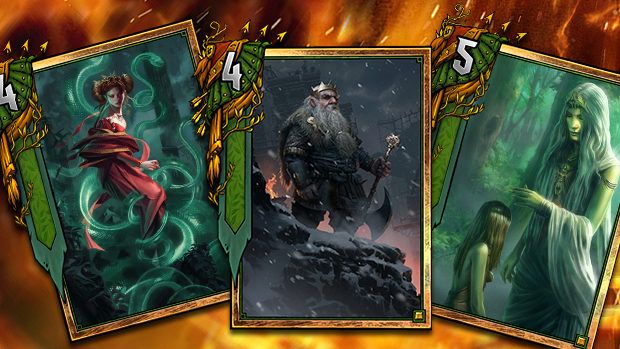
- Brouver Hoog can issue the order to move a unit to the other row on their side. If this is an enemy unit, it will also be dealt 2 damage. If it is an allied unit, it will be improved by 2. You can use it to weaken cards with special row skills of the opponent or to improve your own cards and thus expand your improvement strategy.
- Filavandrel aén Fidhál improves all units in your hand by 1. Ideal leader for enhancement tactics
Monster Faction: The Best Deckbuilding Tips #1
Last but not least, we present you the best strategies you can use with Monster decks can drive. The faction was almost invincible in Witcher 3. In Gwent - the Witcher card game, victory will not fall into your lap so easily, unless you have a clever strategy ready and know your deck well.
Many monster cards have the use Consume. This means that these units devour other cards, sending them to the graveyard. At the same time, the consuming unit is improved by the strength of the consumed unit. The Weaver: Summon or Toad Prince are cards that work with Consume.
The perfect complement to Consume are cards with Death Wish. Death Wish means that the ability of the respective card is activated the moment the card is moved to the graveyard. If the target card has been consumed, you get two benefits at once: The consuming card has been improved and the consumed card triggers another action. In this way, you can achieve surprising chain reactions that will make your opponent sweat quite a bit.
Monster Faction: The Best Deckbuilding Tips #2
The monster faction is said to benefit from weather cards. This is true, but you should include cards that have the immunity attribute in your deck, such as Alpha Werewolf. Immune cards are not affected by weather effects. This means that with tactically played weather cards you can massively weaken your opponent while triumphing yourself, because a part of your units is immune to the effects.
The symbol of the Gwent monster faction.
So for the immunity strategy, be sure to take a few weather cards to be able to damage the opponent. You should also have the appropriate leader with you. Eredin Bréacc Glass can improve a unit and make it immune at the same time.
Monsters can always surprise you. When your opponent is feeling safe, the combination of copy, create, generate, and thrive is a way to still win. Cards like Abaya thrive, so they improve when a stronger card is played. So play them at the very beginning and you can become quite powerful over time.
Other cards can create copies of units or generate more monsters (Crab Spider's Nest). The Devana Runestone is a card that supports this strategy, because it creates a bronze unit and plays it out.
Also fitting into this strategy is the trifecta of relics: the Whisperer, the Brewer, and the Weaver. Each of these cards improves another unit by 2. The improvement is in turn increased when one of the other two relic cards is played. So it's best to use all three together.
The best monster leader for your Gwent strategy
These are the leaders you can choose in the monster deck:
- The Forest Spirit improves a unit in your hand by 8.
- Eredin Bréacc Glass, in turn, improves a unit by 3 and also makes it immune. In this way, the card defies weather effects and complements a strategy that relies on immunity.
The monster deck has it all.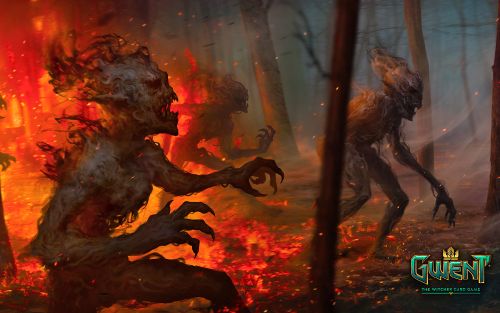
- The Invisible One activates an allied unit's Death Wish ability - ideal for the Death Wish strategy. The ability is renewed at the start of the next turn.
- The Crab Spider Queen generates a Crab Spider Drone and summons it to the allied ranks whenever an allied unit is destroyed during your turn. This makes her the perfect addition to consume strategies as well as the copy and create strategy.
Visit us on Facebook and Instagram to discuss your favorite games.
